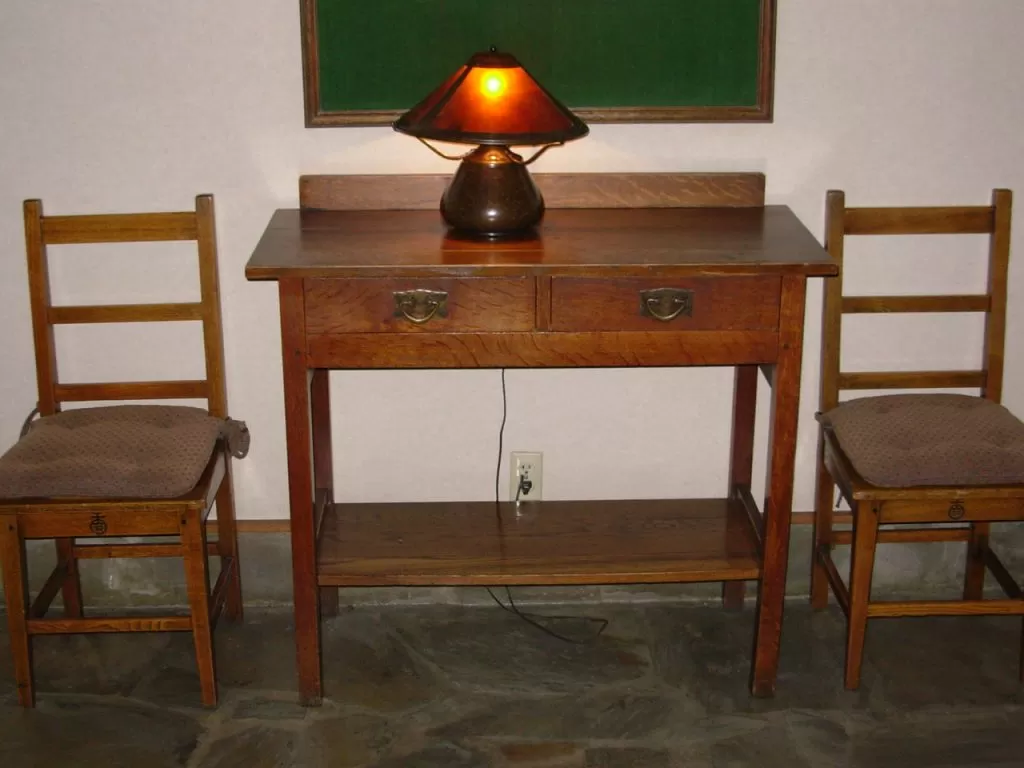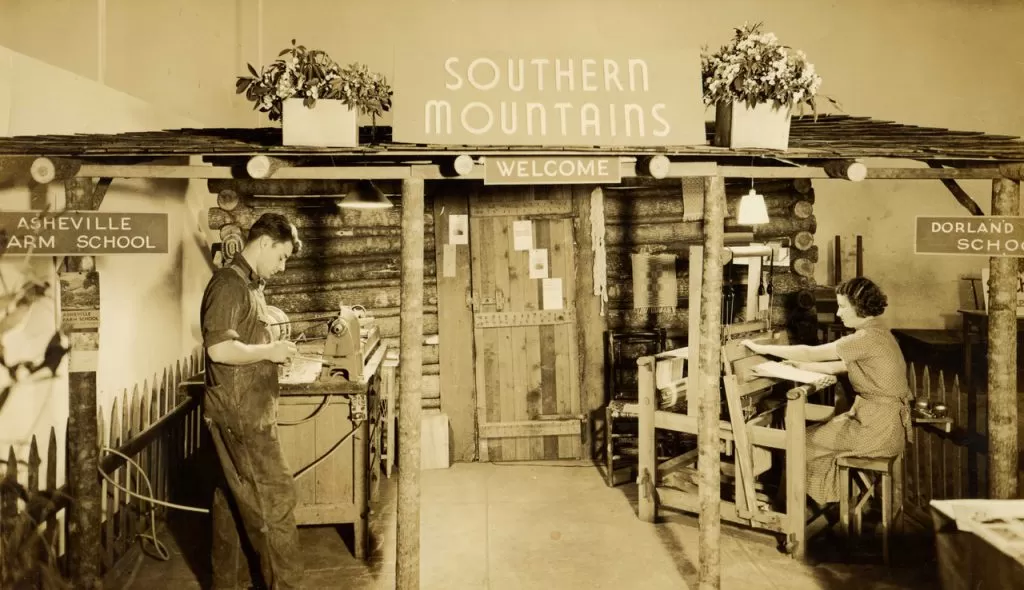Thinking Through Craft at the Grove Park Inn
“We’re different.”
That’s one of the first lines you’ll read when you go to the website of Warren Wilson College, which I did last Monday in preparation for a tour I volunteered to lead for a group of their students enrolled in a class called “Thinking Through Craft.” In it, they are examining various movements and the crafts associated with each one, including the Arts and Crafts movement.
Pretty cool, eh?
Almost enough to make you want to go back to college….

Outside of the Arts and Crafts Conference, I have delivered more than a hundred talks on the Grove Park Inn and the Arts and Crafts movement, but this was the first time that everyone in any of those audiences knew who John Ruskin, William Morris, Gustav Stickley, and Elbert Hubbard all were – and their significance.
And so, it was a true delight to lead fifteen eager college students through the hallways of the Grove Park Inn, pausing to appreciate the hammered copper lighting fixtures created by the Roycroft Copper Shop, a Craftsman Workshops two-drawer server the inn added to its collection in 1988, and an assortment of vintage and contemporary Arts and Crafts pieces lining the public hallways throughout the 512-room resort.

For the majority of these young students, it was their first time up Sunset Mountain to the historic Arts and Crafts hotel, and they were in awe. We began in the Great Hall with the towering twin fireplaces, each large enough to park a car in the hearth, besides hiding a guest elevator behind the mammoth granite boulders. Upstairs they tilted their heads back to stare from the third floor Palm Court up through the enormous sixth floor skylight, sat in Old Hickory rockers, and traced their fingertips over the Roycroft shopmark carved into the leg of a quartersawn oak library table.
At times, I remembered to just be quiet — and let them soak it all in.

While I felt as if I knew a little about Warren Wilson College, a four-year liberal arts school located a few miles east of Asheville, their website also explained how in 1942 the Asheville Farm School merged with the Dorland-Bell School to create the college. A cottage industry called “Warren Wilson Crafts” lasted for nearly thirty years, where “students worked 15 hours per week to produce fine quality woven goods to sell. They made guest towels, luncheon mats, needle cases, napkins, baby bibs, table runners, bookmarks, pillowcases, stoles, and aprons.”

More recently, craft production on campus was revived with a Fiber Arts Crew, a Wood Joinery Crew, and a Blacksmithing Crew. In addition, the art department added studio craft and material arts, along with a full-time teaching position in sculpture and greater support for woodworking, fiber arts, and blacksmithing. As the website explained, “Today, Fine Art and Craft Crew supervisors bolster undergraduate opportunities for students to research, learn, and expand their artistic skills….”
Or as John Ruskin said 150-some years ago, “Head, Heart and Hand.”
And for those who think the Arts and Crafts movement and its revival are about to follow down the path of the dinosaurs, have a chat with someone taking a course called anything like “Thinking Through Craft.”
It will lift your spirits.
Until next week,
“If you think education is expensive, try ignorance.”
Bruce
